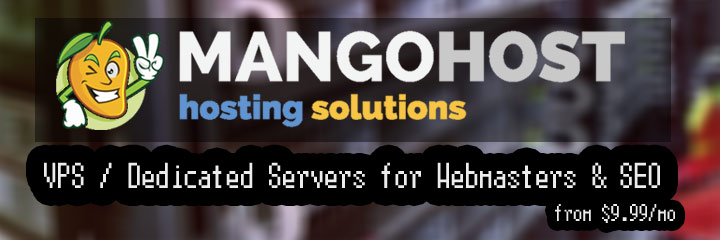
 Get the solution ↓↓↓
Get the solution ↓↓↓
Assuming a URL of:
www.example.com/?val=1#part2
PHP can read the request variablesval1 using the GET array.
Is the hash valuepart2 also readable? Or is this only upto the browser and JavaScript?
The main problem is that the browser won't even send a request with a fragment part. The fragment part is resolved right there in the browser. So it's reachable through JavaScript.
Anyway, you could parse a URL into bits, including the fragment part, using parse_url(), but it's obviously not your case.
Simple test, accessing http://localhost:8000/hello?foo=bar#this-is-not-sent-to-server
python -c "import SimpleHTTPServer;SimpleHTTPServer.test()"
Serving HTTP on 0.0.0.0 port 8000 ...
localhost - - [02/Jun/2009 12:48:47] code 404, message File not found
localhost - - [02/Jun/2009 12:48:47] "GET /hello?foo=bar HTTP/1.1" 404 -
The server receives the request without the #appendage - anything after the hash tag is simply an anchor lookup on the client.
You can find the anchor name used within the URL via javascript using, as an example:
<script>alert(window.location.hash);</script>
The parse_url() function in PHP can work if you already have the needed URL string including the fragment (http://codepad.org/BDqjtXix):
<?
echo parse_url("http://foo?bar#fizzbuzz",PHP_URL_FRAGMENT);
?>
Output: fizzbuzz
But I don't think PHP receives the fragment information because it's client-only.
It is retrievable from Javascript - aswindow.location.hash. From there you could send it to the server with Ajax for example, or encode it and put it into URLs which can then be passed through to the server-side.
The answer is no.
The main purpose of the hash is to scroll to a certain part of the page where you have defined a bookmark. e.g. Scroll to this Part when page loads.
The browse will scroll such that this line is the first visible content in the page, depending on how much content follows below the line.
Yes javascript can acces it, and then a simple ajax call will do the magic
What about:
Dynamically grab the #hash
<script>
var urlhash = window.location.hash, //get the hash from url
txthash = urlhash.replace("#", ""); //remove the #
//alert(txthash);
</script>
<?php
$hash = "<script>document.writeln(txthash);</script>";
echo $hash;
?>
To make it more fluent:
Full Example using just Javascript and PHP
<script>
var urlhash = window.location.hash, //get the hash from url
txthash = urlhash.replace("#", ""); //remove the #
function changehash(a,b){
window.location.hash = b; //add hash to url
//alert(b); //alert to test
location.reload(); //reload page to show the current hash
}
</script>
<?php $hash = "<script>document.writeln(txthash);</script>";?>
<a onclick="changehash(this,'#hash1')" style="text-decoration: underline;cursor: pointer;" >Change to #hash1</a><br/>
<a onclick="changehash(this,'#hash2')" style="text-decoration: underline;cursor: pointer;">Change to #hash2</a><br/>
<?php echo "This is the current hash: " . $hash; ?>
I think the hash-value is only used client-side, so you can't get it with php.
you could redirect it with javascript to php though.
Th part of an URI after the# is called "fragment" and is by definition only available/processed on client side (see https://en.wikipedia.org/wiki/Fragment_identifier).
On the client side, this can be accessed using javaScript withwindow.location.hash.
<?php
$url=parse_url("http://domain.com/site/gallery/1?user=12#photo45 ");
echo $url["fragment"]; //This variable contains the fragment
?>
This is should work
Yes you can:
Use this method to prevent errors:
<script>
query=location.hash;
document.cookie= 'anchor'+query;
</script>
And of course in PHP, explode that puppy and get one of the values
$split = explode('/', $_COOKIE['anchor']);
print_r($split[1]); //to test it, use print_r. this line will print the value after the anchortag
We can do it with another approach too, Like first of all get the hash value from js and call the ajax using that parameter and can do whatever we want
Another solution is to add a hidden input field to the php page:
<input type="hidden" id="myHiddenLocationHash" name="myHiddenLocationHash" value="">
Using javascript/jQuery you can set the value of this field on the page load or responding to an event :
$('#myHiddenLocationHash').val(document.location.hash.replace('#',''));
In php on the server side you can read this value using the $_POST collection:
$server_location_hash = $_POST['myHiddenLocationHash'];
Our community is visited by hundreds of web development professionals every day. Ask your question and get a quick answer for free.
Find the answer in similar questions on our website.
Do you know the answer to this question? Write a quick response to it. With your help, we will make our community stronger.
PHP (from the English Hypertext Preprocessor - hypertext preprocessor) is a scripting programming language for developing web applications. Supported by most hosting providers, it is one of the most popular tools for creating dynamic websites.
The PHP scripting language has gained wide popularity due to its processing speed, simplicity, cross-platform, functionality and distribution of source codes under its own license.
https://www.php.net/
JavaScript is a multi-paradigm language that supports event-driven, functional, and mandatory (including object-oriented and prototype-based) programming types. Originally JavaScript was only used on the client side. JavaScript is now still used as a server-side programming language. To summarize, we can say that JavaScript is the language of the Internet.
https://www.javascript.com/
JQuery is arguably the most popular JavaScript library with so many features for modern development. JQuery is a fast and concise JavaScript library created by John Resig in 2006. It is a cross-platform JavaScript library designed to simplify client-side HTML scripting. Over 19 million websites are currently using jQuery! Companies like WordPress, Facebook, Google, IBM and many more rely on jQuery to provide a kind of web browsing experience.
https://jquery.com/

Welcome to the Q&A site for web developers. Here you can ask a question about the problem you are facing and get answers from other experts. We have created a user-friendly interface so that you can quickly and free of charge ask a question about a web programming problem. We also invite other experts to join our community and help other members who ask questions. In addition, you can use our search for questions with a solution.
Ask about the real problem you are facing. Describe in detail what you are doing and what you want to achieve.
Our goal is to create a strong community in which everyone will support each other. If you find a question and know the answer to it, help others with your knowledge.